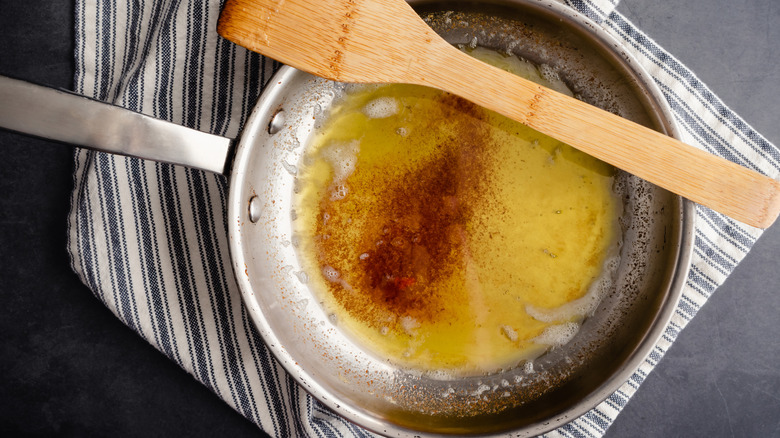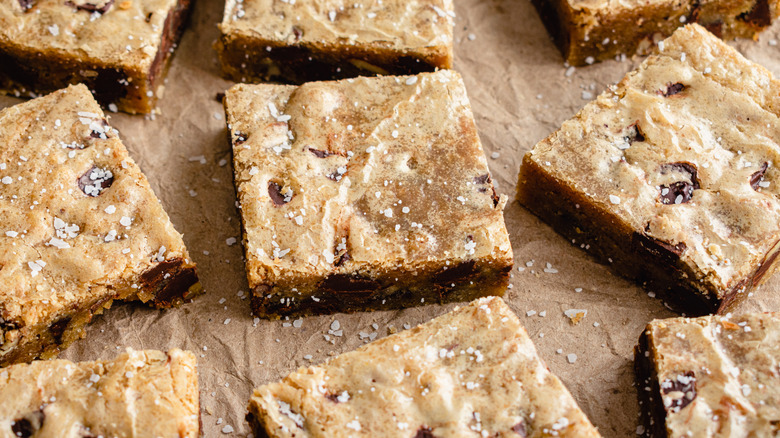How To Swap Regular Butter For Brown Butter In A Recipe
If a recipe calls for butter — whether it's cold, room temperature, or melted — 99% of the time I automatically swap it for brown butter. The final result is always 10 times more delicious than if regular butter is used, like in Alton Brown's chewy chocolate chip cookies. However, this isn't an exact one-to-one replacement in baking. If you're not yet familiar with brown butter, it's regular butter that's been melted low and slow until the milk solids separate and brown, creating a nutty, rich, and caramelized flavor. We have more instructions on how to brown butter and become a better baker here.
Regular butter contains about 15% water, which evaporates during browning, and reducing any amount of moisture when baking can create a dry final product. To compensate for moisture loss, for every stick of butter (½ cup or 113 grams) in a recipe, add one tablespoon (14 grams) of water to brown butter once it has cooled. For an even richer taste, use two tablespoons of milk instead of water and add it directly into the pot in which the butter is browning. Adding milk may cause the butter to brown for 20 minutes longer, but the result is definitely worth the wait.
Even though brown butter is melted, it can still be used to add rich flavor to baking recipes that call for cold or softened butter, like pie crusts or frostings. However, this requires a slightly different process. To do so, brown an extra one to two tablespoons of regular butter per stick to account for moisture loss, then let it cool enough to reach the original temperature specified in the recipe before adding.
You almost always can (and should) swap regular butter for brown butter
While brown butter enhances the flavor of baked goods, it can also alter leavening. When butter and sugar are creamed together, pockets of air are created that contribute to the height of baked goods. Therefore, using brown butter will likely result in a shorter, chewier, denser product, but in some baked goods, this texture change can be a bonus. Brownies, blondies, bars, cookies, and even some cakes and quick breads (like Martha Stewart's banana bread) can benefit, but it's not ideal for baked goods that are meant to have a light and fluffy texture, like a classic white cake. Brown butter also won't work well for baked goods with delicate flavors because of its overpowering taste.
Brown butter can also replace regular butter in other cooking scenarios, such as drizzling on roasted Brussels sprouts, incorporating into a creamy sauce for pasta dishes, or pan frying fish. In this case, accounting for the loss in moisture isn't as crucial in cooking as it is in baking, and one-to-one replacement works as long as there's enough brown butter to get the job done. However, it wouldn't hurt to add a little more liquid, because more butter is always better.

